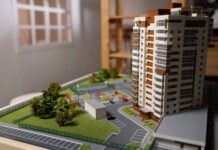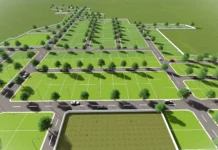Ankur Vihar, a developing neighbourhood outside of Delhi, has grown quickly from a sleepy suburb to a bustling neighbourhood. Its expanding transit system and better connectivity have further fuelled this transition, making it a desirable choice for both investors and homeowners. Once renowned for its reasonably priced homes and tranquil surroundings, the neighbourhood has witnessed a spike in building activity as a result of its advantageous position and deliberate efforts to improve its connections. Building a strong transportation infrastructure has improved the region’s economic prospects and made commuting easier for locals. This has attracted a diverse population looking for the ideal balance between suburban peace and urban convenience.
Road connectivity and a strategic location
Nestled between Ghaziabad and Delhi, Ankur Vihar enjoys a strategic location that provides easy access to both main cities. A simple commute is made possible by the area’s extensive network of arterial roadways. Ankur Vihar’s residents may travel to central Delhi in 30 to 40 minutes during off-peak hours thanks to the Loni Road, a crucial highway. Moreover, the Delhi-Saharanpur Road (SH-57) guarantees easy access to Ghaziabad, improving everyday commuter connectivity.
Ghaziabad Junction, the closest major railway station, is conveniently accessible by long-distance train and is around 10 kilometres distant. This station strengthens Ankur Vihar’s connectivity by serving as a gateway for locals going to other regions of India.
Metro Accessibility:
Ankur Vihar’s close proximity to the Delhi Metro network is a major factor contributing to the rise of the local real estate market. A short drive away is the Johri Enclave Metro Station on the Red Line, which provides residents with rapid and effective access to Delhi’s enormous metro system. Connaught Place, Kashmere Gate, and other important locations in the capital can be easily reached because of this link.
Plans for future metro extensions are anticipated to bring the metro even closer to Ankur Vihar, increasing the area’s allure. For daily commuters, it is hoped that the projected expansion of the Red Line towards Loni will shorten travel times and improve convenience.
New Infrastructure:
To improve Ankur Vihar’s connectivity, a number of new projects are being worked on in addition to the current infrastructure. Flyovers, underpasses, and improved road widening projects are being built to reduce traffic and provide easier travel. The area’s fast urbanization and rising population density depend heavily on these infrastructure improvements.
Conclusion: Ankur Vihar’s transportation network and remarkable connectivity are key factors in its rise to popularity as a residential area. Prospective homeowners and investors find the area’s advantageous position, well-established road connections, dependable public transportation, and close proximity to the metro network to be highly persuasive. Accessibility and commuter convenience are anticipated to increase even further as infrastructure projects, such as metro extensions and road expansions, move forward. Ankur Vihar is a shining example of balanced urban development because of the continuous improvement in connectivity, which not only promises to maintain the area’s growth trajectory but also to improve the quality of life for its citizens.







